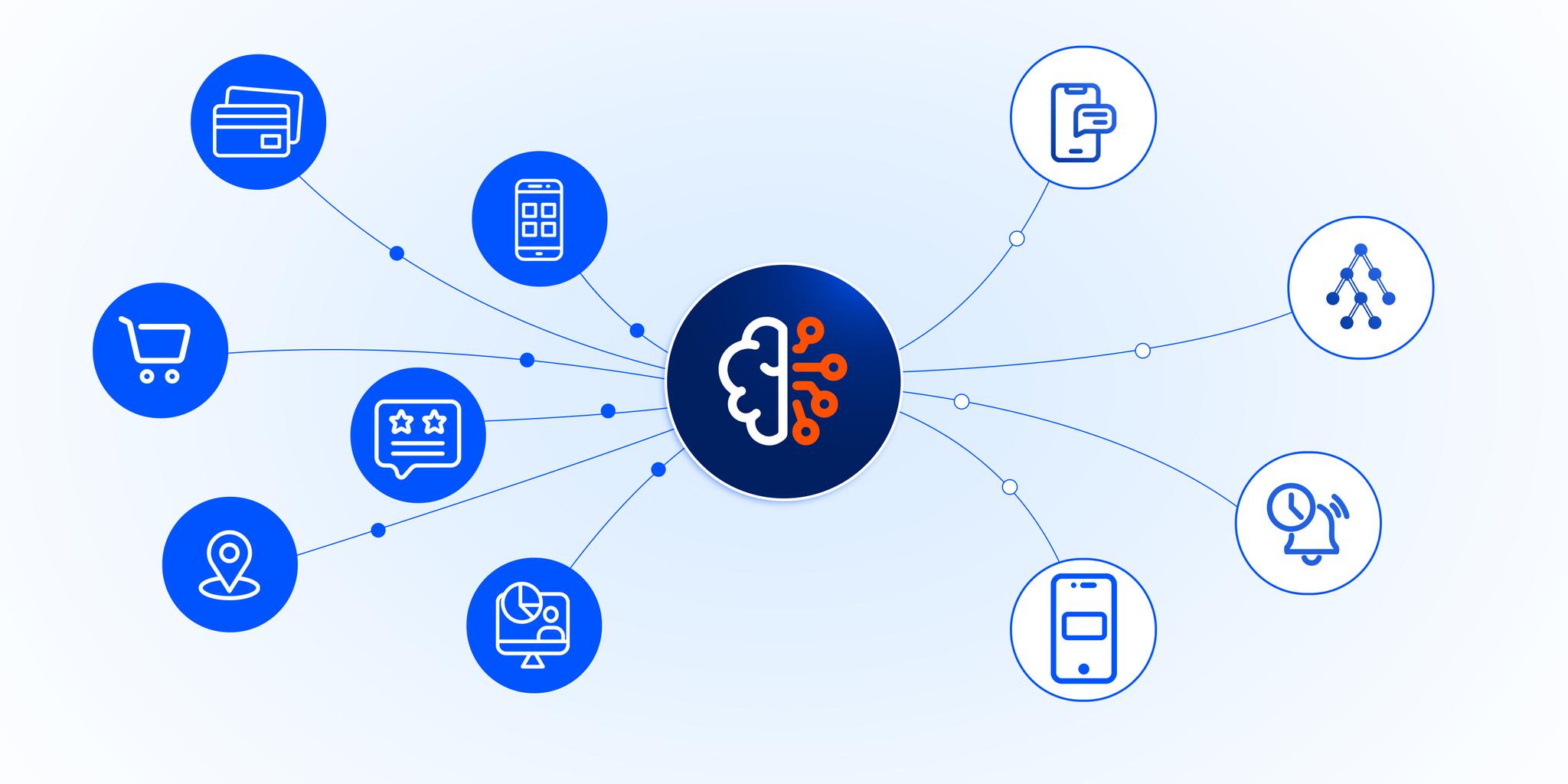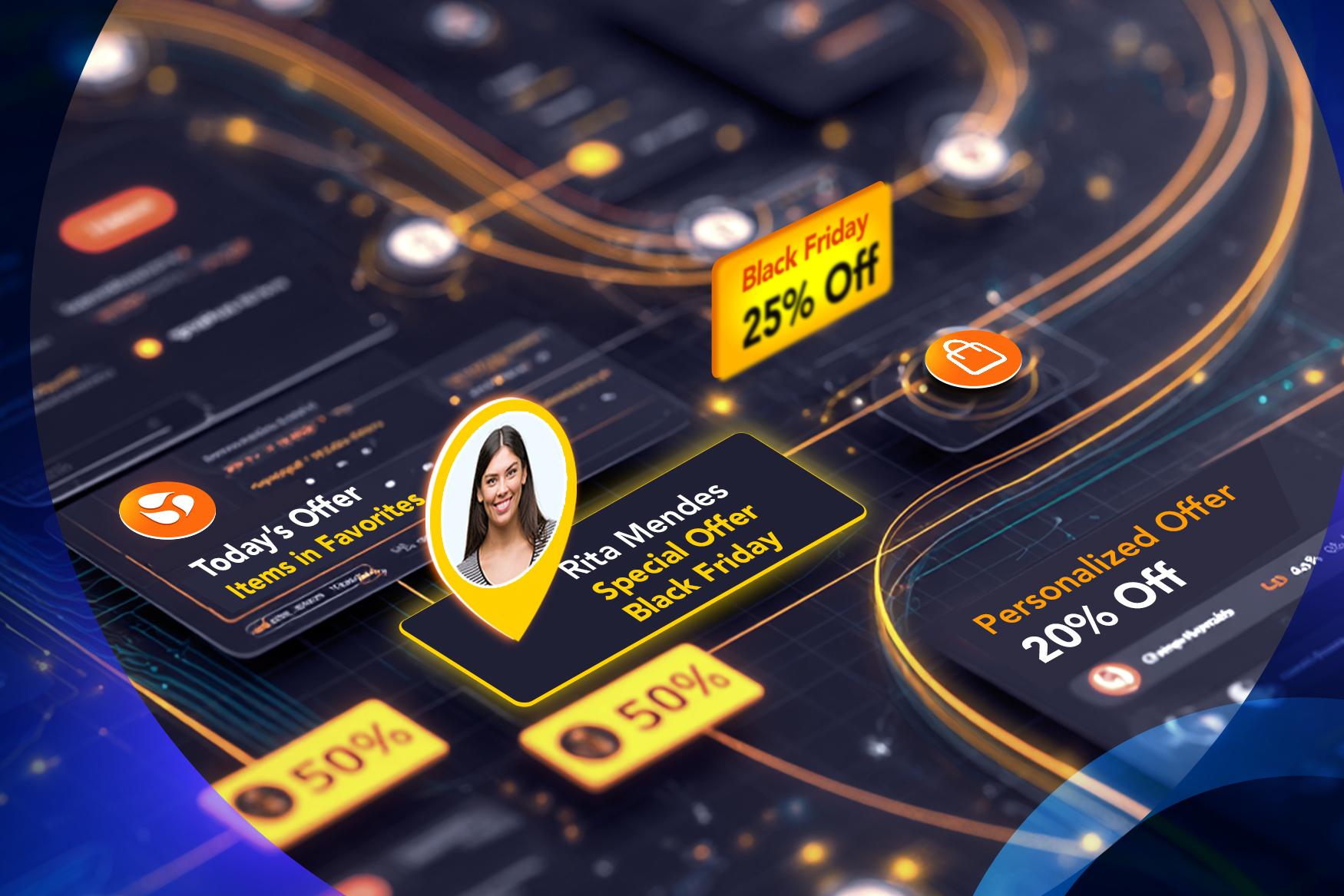- What Is a Customer Data Platform (CDP)?
- What Is a Customer Data Platform?
- What Is a Customer Engagement Platform?
- CDP vs Journey Orchestration vs Engagement Platform: The Core Differences
- How They Work Together
- Real Examples: How Leading Brands Activate Real-Time Engagement
- When Do You Need a CDP, Journey Orchestration, or Engagement Platform?
- Conclusion: The Stack That Wins in 2025 and Beyond
Most companies believe that implementing a CDP will finally fix their customer engagement challenges.
It won’t.
Brands pour millions into data tools, build unified profiles, and map journeys, yet customers still drop off, ignore campaigns, and churn. Why? Because most Martech stacks are missing the real-time activation and decisioning layer needed to act “in the moment.”
CDPs store data.
Journey orchestration tools design experiences.
But neither execute real-time, personalized interactions at scale.
This is where modern customer engagement is broken, and where the market is shifting.
Enter the Real-Time Engagement Platform: the layer that turns data and journeys into real conversations with customers in milliseconds.
Before we get there, we must clear the confusion between three commonly mixed terms: CDP, Journey Orchestration Platform, and Engagement Platform. If you’ve ever wondered which one you actually need or whether you need all three, you’re not alone. Even experienced CX, Digital, and Martech leaders struggle with this.
Let’s break down what each one does, where they fall short, and the missing piece that unlocks true real-time customer engagement.
What Is a Customer Data Platform (CDP)?
A Customer Data Platform is designed to collect, unify, and structure customer data from multiple systems to create a single customer profile. It solves the fragmentation problem, giving teams a shared source of truth.
A strong CDP helps you:
- Aggregate data from multiple channels into one system
- Build unified and enriched customer profiles
- Segment audiences for targeted marketing
- Activate data into external tools (to an extent)
- CDPs are crucial for structured customer data and insights but here’s the misconception:
- A CDP doesn’t engage customers. It prepares data for engagement.
Even the most advanced CDP does not:
🚫 Orchestrate journeys
🚫 Decide the next best action
🚫 Trigger real-time interactions across channels
🚫 Personalize at the moment of customer intent
Many enterprises learn this the hard way. They invest in a CDP expecting customer engagement transformation, but end up with beautifully organized data… and no real-time outcomes. A CDP is foundational, but without a real-time engagement layer, it becomes a very expensive database.
CDPs deliver intelligence. But intelligence without execution doesn’t change customer behavior.
What Is a Journey Orchestration Platform?
A Journey Orchestration Platform helps brands map, design, and automate customer journeys across channels. It ensures interactions feel coordinated and relevant across the lifecycle.
Journey Orchestration Platforms help you:
- Connect touchpoints into a cohesive journey
- Adapt journeys based on customer behavior
- Personalize messaging along different stages
- Improve the overall customer experience design
They answer the question: “What experience should this customer receive next?”
But here’s the catch:
Most journey orchestration tools still output instructions, someone else needs to execute them.
They often rely on downstream systems to actually deliver messages, decide in real time, and activate experiences.
Even with strong journey orchestration, brands still face:
⚠️ Delays between insight and action
⚠️ Lack of real-time decisioning
⚠️ Disconnected activation across channels
⚠️ Generic experiences when customers behave unexpectedly
Journey orchestration defines the logic and flow, but it still needs a “brain + engine” to decide and deliver the right action at the right moment. That execution layer is where most organizations still struggle.
Journey orchestration is the blueprint, not the engine.
What Is a Customer Engagement Platform?
A Customer Engagement Platform enables brands to deliver real-time, personalized interactions across channels based on customer context, behavior, and intent in the moment.
While CDPs unify data and journey tools plan experiences, Engagement Platforms execute the experience.
A modern Customer Engagement Platform should:
- Listen to real-time customer signals (events, behavior, intent)
- Decide the next best action instantly
- Orchestrate experiences across channels
- Deliver personalized engagement at scale
In other words, it’s the “activation engine” that converts data and journey logic into live, contextual experiences that customers feel.
This is the layer that enables brands to:
1. React in milliseconds, not hours
2. Personalize per customer, not per segment
3. Continuously learn and optimize based on real behavior
Engagement Platforms vary widely. The modern generation goes beyond campaign execution, they combine real-time decisioning + AI + omni channel delivery. Evam sits in this category, acting as the execution and intelligence layer that sits between your CDP and your channel tools to deliver experiences customers actually feel.
CDP vs Journey Orchestration vs Engagement Platform: The Core Differences
| Capability | Customer Data Platform | Journey Orchestration Platform | Real-Time Engagement Platform |
| Unifies customer data | ✅ | ⚠️ Uses CDP data | ✅ Uses CDP profile + live behavior |
| Designs journeys | ❌ | ✅ Yes | ⚠️ Receives journey logic |
| Real-time decisioning (NBA) | ❌ | ⚠️ Limited or external | ✅ Milliseconds, AI-powered |
| Cross-channel activation | ❌ | ❌ Needs external | ✅ Built-in omnichannel execution |
| AI personalization | ❌ | ⚠️ Basic rules | ✅ Predictive + contextual AI |
| Real-time analytics & optimization | ❌ | ⚠️ Limited | ✅ Continuous decision + learning loop |
CDPs and Journey Orchestration tools improve CX planning, but only a Real-Time Engagement Platform brings the customer experience to life.
They are not replacements for each other. They are complementary.
How They Work Together
CDP → Journey Orchestration → Real-Time Engagement → Channels
Short explanation:
CDP = Know the Customer
Data foundation that creates a unified profile.
Journey Orchestration = Design the Experience
Blueprint for how the customer should be engaged.
Real-Time Engagement = Deliver the Moment
AI decides and executes the right action instantly across channels.
Without the last layer, the first two never reach the customer on time.
Real Examples: How Leading Brands Activate Real-Time Engagement
Activated personalized real-time onboarding and lending journeys.
→ Achieved 3× higher conversion by engaging customers at the moment of intent.
Used behavioral triggers to activate credit card and mobile banking journeys.
→ Increased activation and engagement rates within weeks of going live.
Shifted from batch campaigns to real-time decisioning and event-based journeys.
→ Improved NPS, reduced churn impact, and boosted campaign efficiency.
These examples show the impact of adding the engagement layer, not replacing CDP or orchestration tools, but enabling them to finally work.
When Do You Need a CDP, Journey Orchestration, or Engagement Platform?
You need a CDP if you want to:
Fix fragmented data
Build a unified customer profile
Enable personalization insights
You need a Journey Orchestration Platform if you want to:
Design and automate multi-step customer experiences
Ensure consistency across touchpoints
Improve CX flow and lifecycle logic
You need a Real-Time Engagement Platform if you want to:
Trigger the right action in milliseconds
Personalize experiences for each individual
Use AI to decide the next best action across channels
Scale omnichannel engagement that customers actually feel
Modern enterprises often need all three working together, but engagement is the layer that delivers business impact fastest.
Conclusion: The Stack That Wins in 2025 and Beyond
CDPs and Journey Orchestration Platforms are critical pieces of the customer experience puzzle—but they don’t deliver real-time experiences on their own. Brands that still rely on batch campaigns, scheduled pushes, or static flows will continue to lose customers to faster, more relevant competitors.
To win in 2025 and beyond, companies need a modern engagement stack that:
Knows the customer (CDP)
Designs the best possible journey (Journey Orchestration)
Delivers the right action at the right moment (Real-Time Engagement)
Evam fills the missing execution and intelligence layer, turning data and journey logic into real, personalized moments that customers remember.
The brands that win will be those who act in real time, not just plan in real time.








